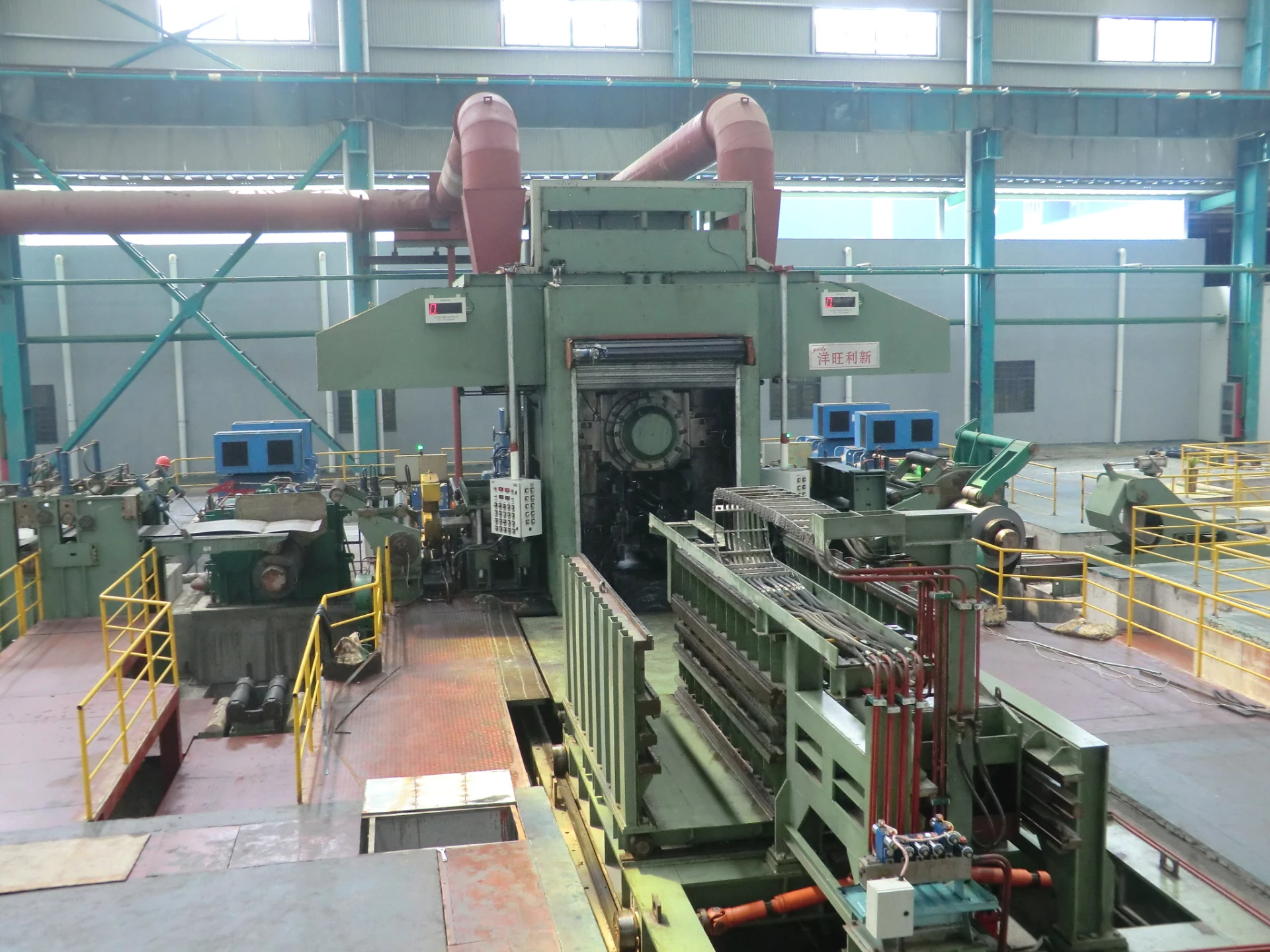
Reversing Rolling Mill | Precision 4Hi/6Hi, Efficient
Four/Six-Hi Reversing Cold Rolling Mill: field notes from the line
If you're weighing up a Reversing Rolling Mill, here’s the straight story from shop floors that have actually run one. YWLX (Origin: No.1518, LAR Valley Int'l, Guang’anmen Avenue, Xicheng District, Beijing, 100055) has quietly seeded its Four/Six-Hi reversing cold mills across China. In practice, the Six-Hi configuration has become the go-to for thin-gauge carbon strip, electrical steel, and stainless strip—often without the drama or the excessive annealing steps people worry about.

What’s driving interest right now
Three things: EV motors (hello, non-oriented electrical steel), appliance-grade strip with razor-thin tolerances, and short-run flexibility. Reversing stands excel at campaign changes and tight flatness control. Honestly, capital outlay is lower than a tandem line, which matters when you want to move fast but still hit ISO-grade tolerances.
Core capabilities at a glance
| Parameter | Four/Six-Hi Reversing Cold Rolling Mill (YWLX) |
|---|---|
| Strip widths | ≈ 900 / 1150 / 1380 mm |
| Entry/exit thickness (carbon) | 3.0 mm → 0.2 mm in 6 passes (no in-process anneal) |
| Electrical steel | 0.63 mm → 0.26 mm in 2–3 passes (GO/NOGO) |
| Gauging & control | AGC, AFC, work-roll bending, shape meter, entry/exit tension control |
| Flatness & thickness | Meets ISO 9445 strip tolerances; real-world ±4–8 μm at ≤0.30 mm (material-dependent) |
| Typical line speed | ≈ 400–800 m/min (grade and pass schedule dependent) |
Process flow (how it actually runs)
- Materials: SPHC carbon strip, GO/NO silicon steel, AISI 304/430 stainless.
- Method: multi-pass reversing with optimized reduction per pass; emulsion 3–6% (real-world may vary); HBU bending and AFC for crown/shape.
- In-line control: X-ray/IS thickness gauges, pyrometers (as needed), closed-loop tension.
- Testing standards: ISO 9445 (flatness/thickness), IEC 60404 (electrical steel properties), ASTM A666 (stainless), EN 10204 3.1 MTC for coils.
- Service life: mill housings 20+ years; backup rolls ≈ 10–25 campaigns; work rolls as low as 1–3 campaigns on aggressive grades—operators say it’s predictable once coolant and bite are dialed in.
- Industries: EV motors/transformers, appliances, architectural hardware, precision stamping.
Why pick a Reversing Rolling Mill instead of a tandem?
Short answer: flexibility, lower CAPEX, and quick grade changes. Many customers say they hit better yields on niche lots without babysitting 5-stand logistics. And yes, energy per ton can be surprisingly competitive when the pass schedule is tuned.
Vendor snapshot (what buyers usually compare)
| Vendor | Width classes | Min exit thickness | Electrical steel capability | Lead time | Aftermarket |
|---|---|---|---|---|---|
| YWLX | 900 / 1150 / 1380 mm | ≈ 0.20 mm (carbon) | GO & NO; proven pass schedule | Around 6–10 months | Local teams across China; remote support |
| Global Brand A | Up to 1450 mm | ≈ 0.18 mm | Yes; premium options | 9–14 months | Global + spares hubs |
| Regional OEM B | Up to 1250 mm | ≈ 0.25 mm | Limited | 5–8 months | On request |
Customization and upgrades
YWLX supports tailored payoff/tension reels, hydraulic bending packages, upgraded shape meters, coolant filtration, and automation tweaks (AGC model tuning, pass schedule recipes). To be honest, the quick wins often come from emulsion control and coil handling.
Real-world case
A North China appliance steel producer installed a 1150 mm Six-Hi Reversing Rolling Mill. After commissioning, SPHC 3.0 → 0.25 mm hit ±5 μm thickness at 600 m/min; scrap dropped ~1.2%. On NO steel 0.50 → 0.27 mm, magnetic loss met IEC 60404 targets; energy per ton fell ~12% versus their older four-hi. The line supervisor joked, “we spend more time choosing coils than fixing shape now.”
Compliance, tests, and paperwork
- Factory quality: ISO 9001; CE/UKCA where applicable.
- Coil certificates: EN 10204 3.1; flatness per ISO 9445; stainless per ASTM A666.
- Typical acceptance: I-units flatness checks, Ra ≈ 0.3–0.6 μm (grade-dependent), gauge repeatability & reproducibility studies.
References
- ISO 9445-1: Cold-reduced steel sheet and strip — Tolerances on thickness and width.
- IEC 60404 series: Magnetic materials — Methods of measurement of magnetic properties of electrical steel.
- ASTM A666: Standard Specification for Annealed or Cold-Worked Austenitic Stainless Steel Sheet, Strip, and Plate.
- EN 10204: Metallic products — Types of inspection documents (3.1 certificates).
-
YWLX’s 1450mm Six-Hi Reversing Mill Goes Live in BangladeshNewsNov.24,2025
-
Adjusting Roll Gap in 6Hi Reversing Cold Rolling Mill for Thin StripNewsNov.13,2025
-
Quality Control Standards for Automatic Gauge Control in Strip RollingNewsNov.13,2025
-
Effect of Skin Pass Rolling on Metal DuctilityNewsNov.13,2025
-
Key Components of a Modern TempermillNewsNov.13,2025
-
Common Wear Patterns of Work Roll in Tandem Cold Mill OperationsNewsNov.13,2025
-
Revolutionary Skin Pass Rolling Technology for Enhanced Steel QualityNewsNov.04,2025










